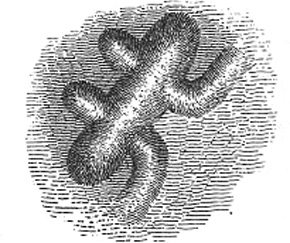NEWARK
OBSERVATORY MOUND
AND CIRCLE
The once-in-a-generation moonrise alignment explains the position of Observatory Mound, at the end of the main axis.
Yet it sits atop a most unusual and elegant detail. The sides of the large circle don’t quite meet, instead curving gently
inward and underneath the mound; they emerge on the outside as two small twin tails (today’s exact configuration is a 19th
century partial reconstruction). Dr. Brad Lepper explains:
It appears as if there used to be an entrance that went into the circle, so just like the entrance to the Great Circle
it ends in sort of these gateway forms of two tails. An entrance way just like that, I think, originally existed outside
of the circle, and at some point the builders chose to block that entrance off by building what we call now “Observatory
Mound” across that entrance. So the architectural configuration we see today is a former entrance way, blocked off by a large
mound.
Continuing around or through the northern half of the circle towards the far, left flank of the Octagon, there are views
across the circle’s interior that emphasize its remarkable precision as an “artificial horizon” and sighting instrument.
Its 1,054-foot diameter is so great, and its form so subtle, that it’s possible to nearly lose the feeling of being within
such a precisely enclosed space.

The twin tails behind Observatory Mound suggested to Atwater there might be an arched passageway beneath the mound.


